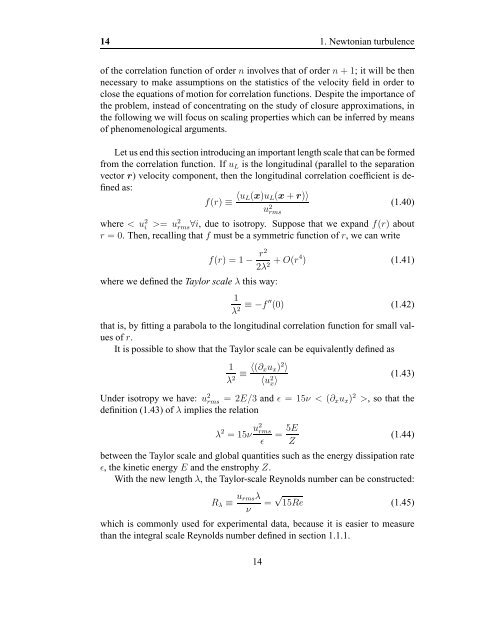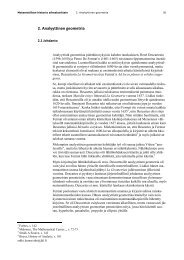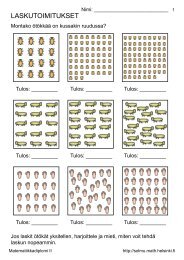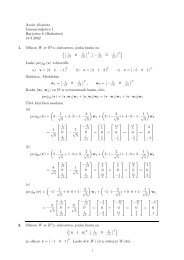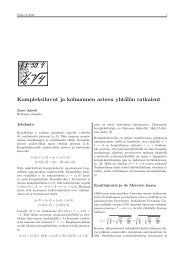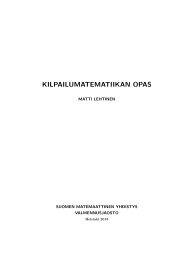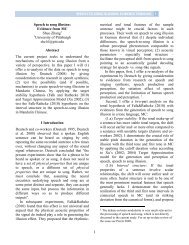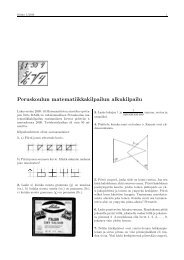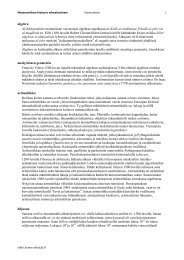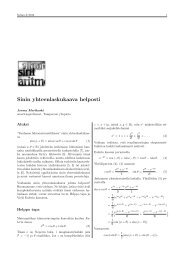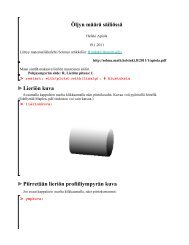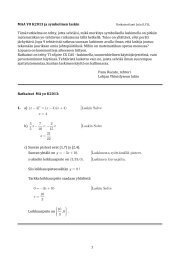Non-Newtonian turbulence: viscoelastic fluids and binary mixtures.
Non-Newtonian turbulence: viscoelastic fluids and binary mixtures.
Non-Newtonian turbulence: viscoelastic fluids and binary mixtures.
You also want an ePaper? Increase the reach of your titles
YUMPU automatically turns print PDFs into web optimized ePapers that Google loves.
14 1. <strong>Newtonian</strong> <strong>turbulence</strong><br />
of the correlation function of order n involves that of order n + 1; it will be then<br />
necessary to make assumptions on the statistics of the velocity field in order to<br />
close the equations of motion for correlation functions. Despite the importance of<br />
the problem, instead of concentrating on the study of closure approximations, in<br />
the following we will focus on scaling properties which can be inferred by means<br />
of phenomenological arguments.<br />
Let us end this section introducing an important length scale that can be formed<br />
from the correlation function. If uL is the longitudinal (parallel to the separation<br />
vector r) velocity component, then the longitudinal correlation coefficient is defined<br />
as:<br />
f(r) ≡ 〈uL(x)uL(x + r)〉<br />
u2 (1.40)<br />
rms<br />
where < u2 i >= u2rms ∀i, due to isotropy. Suppose that we exp<strong>and</strong> f(r) about<br />
r = 0. Then, recalling that f must be a symmetric function of r, we can write<br />
where we defined the Taylor scale λ this way:<br />
f(r) = 1 − r2<br />
2λ 2 + O(r4 ) (1.41)<br />
1<br />
λ 2 ≡ −f ′′ (0) (1.42)<br />
that is, by fitting a parabola to the longitudinal correlation function for small values<br />
of r.<br />
It is possible to show that the Taylor scale can be equivalently defined as<br />
1<br />
λ2 ≡ 〈(∂xux) 2 〉<br />
〈u2 x〉<br />
(1.43)<br />
Under isotropy we have: u 2 rms = 2E/3 <strong>and</strong> ɛ = 15ν < (∂xux) 2 >, so that the<br />
definition (1.43) of λ implies the relation<br />
λ 2 = 15ν u2 rms<br />
ɛ<br />
= 5E<br />
Z<br />
(1.44)<br />
between the Taylor scale <strong>and</strong> global quantities such as the energy dissipation rate<br />
ɛ, the kinetic energy E <strong>and</strong> the enstrophy Z.<br />
With the new length λ, the Taylor-scale Reynolds number can be constructed:<br />
Rλ ≡ urmsλ<br />
ν = √ 15Re (1.45)<br />
which is commonly used for experimental data, because it is easier to measure<br />
than the integral scale Reynolds number defined in section 1.1.1.<br />
14


